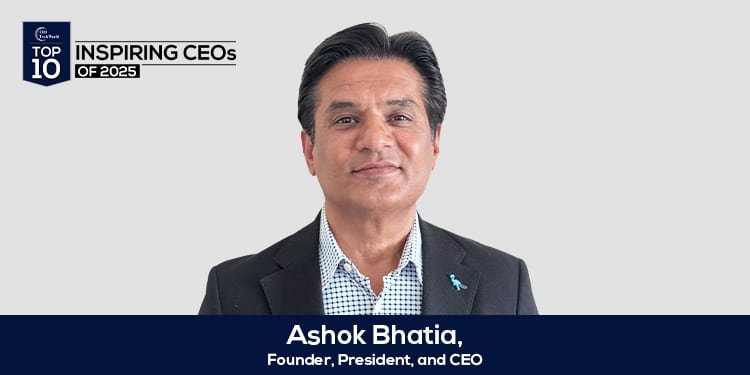Technology is advancing rapidly, and two innovations—blockchain and AI—are at the forefront of this shift. While both hold the potential to reshape industries in profound ways, they’re often misunderstood, especially by those who view them as just the latest tech jargon.
While AI’s power lies in its ability to analyze data, learn, and make predictions, it also poses significant risks. Conversely, blockchain offers solutions that address these risks, creating an ideal partnership between these two technologies.
Let us explore how Blockchain can help organizations mitigate the risks posed by AI, build trust, and ensure that innovation moves forward responsibly.
The Promise and Peril of AI
AI holds tremendous potential. It can automate processes, provide real-time insights, and make decisions faster than humans ever could. But with this power comes a set of challenges that businesses must face:
- Data Privacy: AI systems require large amounts of data to function effectively. This data often includes sensitive information, raising privacy concerns.
- Security Vulnerabilities: AI models, if not properly secured, can be hacked or manipulated, leading to faulty outcomes or compromised data.
- Bias and Transparency: AI models are only as good as the data on which they are trained. If that data is biased, the AI’s decisions will be biased too. Moreover, AI often operates as a “black box,” making decisions that are difficult to explain.
- Accountability: When something goes wrong with AI, it’s not always clear who is responsible—was it a flaw in the model, human error, or a data issue?
These risks are significant, and as businesses continue to adopt AI, mitigating them becomes critical. This is where Blockchain can play a key role.
Blockchain: The Underlying Technology of Trust
To understand how Blockchain can help mitigate AI’s risks, it’s important first to grasp what Blockchain actually is. At its core, Blockchain is a distributed ledger technology. Unlike traditional databases that are controlled by a central authority, Blockchain is decentralized and immutable. Once data is entered, it cannot be altered or deleted without consensus from the network.
Blockchain’s characteristics—decentralization, transparency, and immutability—make it an ideal partner for AI, addressing many of AI’s most pressing challenges.
How Blockchain Mitigates AI’s Risks
1. Ensuring Data Integrity
One key risk with AI is the quality of the data being used. If the data fed into AI systems is inaccurate, biased, or tampered with, the decisions made by AI will reflect these flaws. Blockchain ensures data integrity by providing an immutable record of data inputs, meaning that it cannot be changed once data is added to the Blockchain.
This is crucial for sectors like finance, healthcare, and supply chain, where data integrity is critical. For example, ensuring that patient data used for AI-driven diagnostics is accurate and tamper-proof can mean the difference between life and death.
2. Decentralizing Decision-Making
One of the dangers of AI is the potential for centralized control. A single organization—or even a single individual—could control an AI system and manipulate its decisions. Blockchain’s decentralized nature ensures that no single entity has absolute control over the system.
Blockchain can provide transparent records of AI’s decision-making process in a decentralized AI governance model, making it harder for any single party to manipulate the outcome.
3. Mitigating AI Bias
AI bias has become a major issue, as AI models can inadvertently amplify existing biases in data, leading to unfair or discriminatory outcomes. Blockchain can be used to create an audit trail that tracks every decision an AI model makes, and every data point it uses. This transparency allows organizations to audit and correct bias in AI systems.
For instance, AI tools are used to screen candidates during the hiring process. If those tools are biased—favoring certain demographics over others—Blockchain can help expose and correct that bias by providing an immutable record of the AI’s decision-making process.
4. Protecting Privacy
Data privacy is one of the biggest concerns with AI. The massive datasets that AI requires often contain sensitive personal information. Blockchain can enhance privacy by enabling secure, decentralized data storage. Instead of storing all data in a single, centralized location, Blockchain distributes the data across a network, reducing the risk of a single point of failure.
Moreover, zero-knowledge proofs, a concept in Blockchain, can allow data verification without revealing the data itself. This means that AI can still perform its functions while maintaining privacy and protecting sensitive information.
5. Increasing Accountability
One of the toughest challenges with AI is accountability. When an AI model makes a decision, it’s often hard to trace the reasoning behind that decision, which creates problems when something goes wrong. Blockchain can provide an audit trail of every decision an AI system makes, creating a transparent record that can be reviewed for errors or discrepancies.
This level of transparency is crucial for businesses in regulated industries such as finance or healthcare. It ensures that if something goes wrong, the organization can pinpoint exactly what happened, when, and why, enabling quicker solutions and more informed decision-making.
Blockchain and AI Governance: A Powerful Combination
As businesses increasingly adopt AI, they face growing pressure to ensure that these systems are ethical, secure, and transparent. Many organizations are now developing AI governance models to address these concerns, but implementing these models effectively is challenging.
Blockchain can play a critical role in AI governance by providing a secure and transparent infrastructure for tracking and verifying AI decisions. With Blockchain, organizations can ensure that AI systems are accountable, compliant with regulations, and less prone to manipulation.
For example, an AI system in a financial institution might be responsible for making automated trading decisions. Blockchain can ensure that every trade, every data input, and every decision is fully traceable, providing a clear chain of accountability.
The Strategic Advantage for Organizations
Organizations can achieve a powerful balance between innovation and security by combining AI with Blockchain. Businesses that adopt these technologies together improve their operational efficiency and build trust—internally with their employees and externally with customers, regulators, and partners.
In today’s world, where data breaches, biases, and security vulnerabilities dominate the headlines, organizations must proactively mitigate risks and strengthen trust. Blockchain offers a pragmatic solution to many of AI’s challenges, allowing businesses to move forward confidently and responsibly.
The partnership between Blockchain and AI represents a new frontier in technology. By combining AI’s powerful capabilities with Blockchain’s secure, transparent, and immutable infrastructure, organizations can mitigate AI’s risks while reaping the full benefits of both technologies.
For business leaders, the message is clear. As we move further into the age of AI, the responsible use of technology is not just a moral imperative but a strategic advantage. Organizations that leverage Blockchain to support and govern AI will find themselves not only mitigating risks but also unlocking new opportunities for growth and innovation.
Read more articles by Mani Padisetti:
Ensuring Data Security with Sensitivity Labeling in M365 Copilot
Unlocking the Power of AI for Scenario Planning and Forecasting

My journey as the COO, vCIO, and Co-Founder of Digital Armor Corporation and Co-Founder and CEO of Emerging Tech Armory reflects my extensive experience and unwavering dedication to helping medium-sized businesses leverage technology for growth and success. With over two decades of founding and running my own company, I have established myself as a trusted expert in empowering SMBs to enhance productivity, scale effectively, and gain a competitive advantage in their respective industries.
I often refer to myself as the “Growth Catalyst for Mid-Sized Businesses” because I understand the unique challenges these enterprises face, such as limited budgets. I deliver tailored solutions that address their specific goals and constraints.
My secret ingredient to effective leadership is finding joy in being a catalyst for others’ success. I firmly believe in acting in the best interest of my clients, genuinely caring for their businesses as if they were my own. This client-centric approach forms the foundation of my leadership philosophy, driving me to go above and beyond to ensure my clients’ satisfaction and prosperity.








